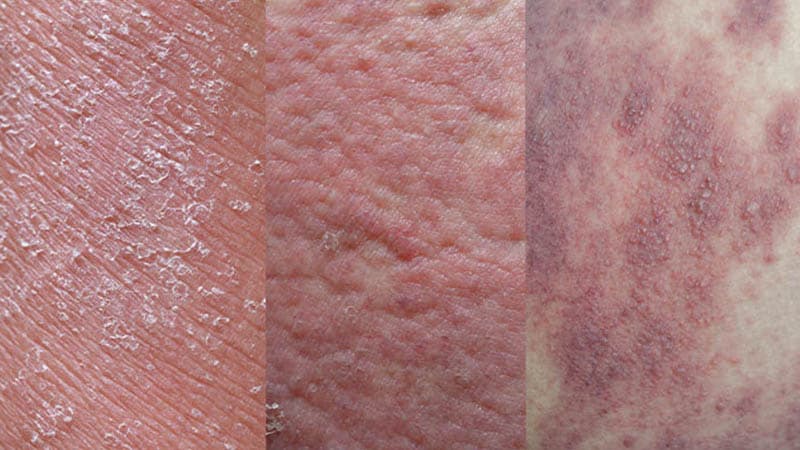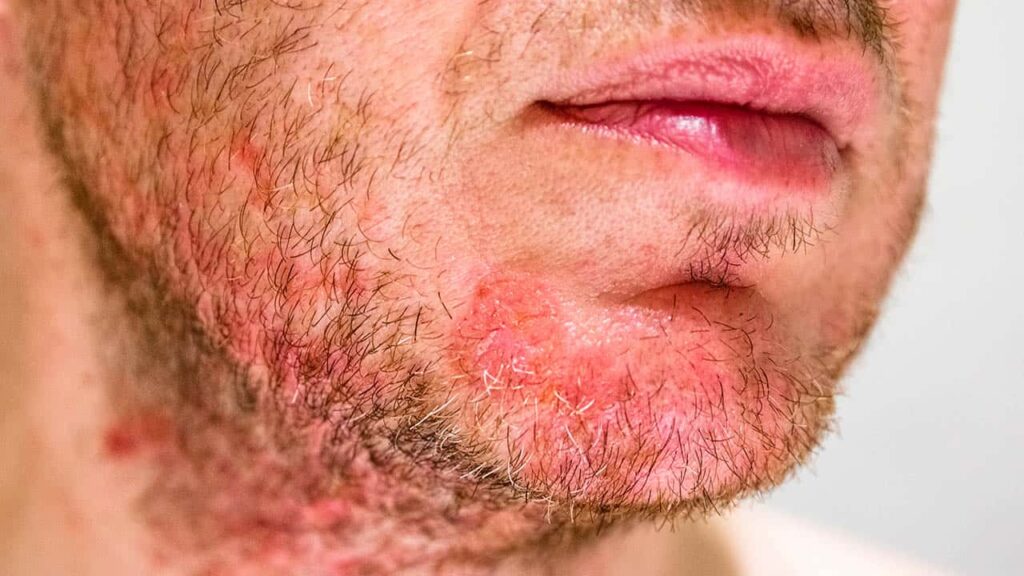Let’s dive into the topic and find out what atopic dermatitis is, how it can be cured, and discover what works and what doesn’t in the battle against this condition.
The most common scenario I go through at work is this:
A person’s skin gets red, itchy, inflamed or becomes painful to the touch.
They go see a doctor, who diagnoses them with atopic dermatitis and immediately prescribes topical corticosteroids and immunomodulators.
The skin heals, but eventually the eczema comes back with a vengeance.
Soon enough I start getting calls from these people who desperately need my help.
Let’s first clear up the confusion and define what atopic dermatitis is, as many doctors use the term for several unexplained skin conditions.
Unfortunately pharmaceutical companies often take advantage of that to make profit, which does more harm than good.
And I’m not saying that to discredit my colleagues, but to emphasize the fact that things are often more complex than just simply prescribing medication from one company or the other.
What is atopic dermatitis?
In its essence atopic dermatitis is a simple and logical skin condition with about 20% of the world’s population suffering from it.
What happens? Over a certain period of time or throughout a person’s entire life, the surface of the skin (the epidermis) dries out and so the skin is unable to protect itself.
That then leads to inflammation and eczema flare-ups in the form of flaky skin, with the occasional blister popping up.
A close-up of atopic skin…

This state can be caused by an allergic reaction to eggs or milk, or it can be a neurological reaction to stress.
It’s important to seek professional help from a doctor or consider alternative medicine, which is especially popular when it comes to neurodermatitis.
But let’s get back to atopic dermatitis… as I said before, it’s usually a condition that spans over a certain period of time during which the skin’s epidermis dries out and so the skin starts losing its moisture. It can affect children, teenagers and adults.
Mythical healing methods
Over the years many theories on how to heal atopic dermatitis have developed – some are true and most are not.
“Healing” soaps for eczema
The number of people who believe that a specific soap can get rid of their atopic dermatitis is increasing each year.
That truly worries me, as using soaps often means drying out your skin even more, which consequently makes your skin more prone to developing atopic dermatitis.
Where do people even get the idea?
Sure, some soaps are milder and your skin can improve temporarily, but they also doesn’t cure atopic dermatitis.
Here’s the problem…
I get calls from mothers almost every day who say that they use charcoal soap twice a day to wash their kid, then they’re shocked that things are getting worse after they got better first.
Atopic dermatitis diets
We also have to address the avalanche of “academic” articles, which mainly try to convince people of the effectiveness of certain diets, while also selling their own product in pulverized form.
Maybe a magical pill or two will make atopic dermatitis disappear!
Sure, many solutions are based on science and do indeed work, but it’s also true that a single avocado achieves the same results as one hundred collagen supplement capsules.
The supplement market is poorly regulated so you can never be 100% sure that a specific product won’t be harmful to your health.
In addition to that, these companies are registered in countries that allow them to take many marketing liberties, making the situation worse.
So the question remains…
Do we want to get rid of atopic dermatitis the natural way or by ingesting capsules of unknown origin?
It is true though that maintaining an appropriate diet can be beneficial, especially if we manage to “convince” our cells to “burn” less.
But that’s an entirely different topic, which we’ll look into in the next article.
Atopic dermatitis cures
I get really frustrated when people who have been using corticosteroids for several years call me for help… but their skin is so extremely thinned out from this long-term use that it’s practically transparent!
Of course cures like corticosteroids are a great solution, but only when used over shorter periods of time!
The main goal should be to find and prevent the cause and not make your skin immune to a curative product, which will probably help you in the future if your condition worsens.
Common sense as a cure
If your skin can’t protect itself, you have to be the one to help it.
Skin isn’t able to protect itself when the epidermis dries out.
Think of it as a house!
If the walls of the house have holes, you can’t protect what’s inside from winds, cold winter temperatures and hot summer temperatures.
The same logic applies to skin… we have to fix those holes.
The best way to do that is by applying a hydrolipidic layer, which protects the skin and ensures that the skin’s moisture is retained.
That’s why people like to use bio-based olive oil – it acts as an occlusive for your skin, which means it traps moisture in your skin and prevents it from escaping, while also letting the skin breathe.
But there’s a better solution – one being used by thousands of people already – Chicatella!
You may think I’m biased, since I work for the company, but I genuinely recommend Chicatella for dry and atopic skin.
Chicatella is the best solution for atopic dermatitis made from natural ingredients that I have ever tried, and numerous client stories convince me even more to stand behind this product with all my love.
Thank you for your positive energy and until next time,
Nika.



